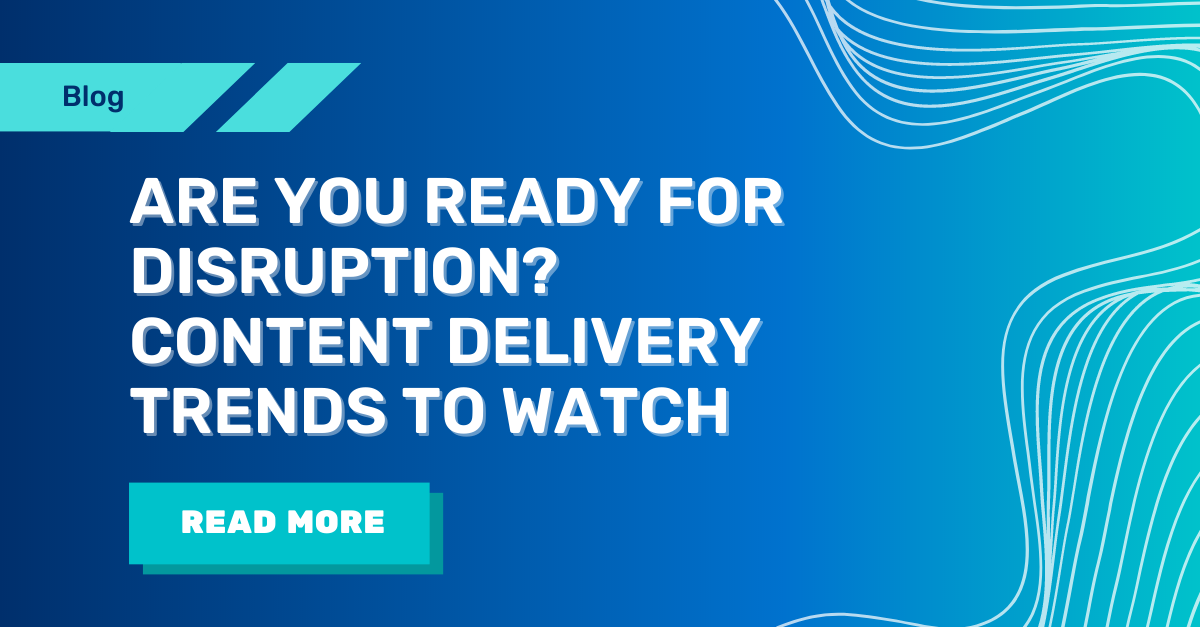With new breakthroughs, innovations and exciting digital experiences emerging, last year was pivotal for the content delivery space. And now that we’re fully immersed in 2023, the pace of disruption will only get faster across the entire digital ecosystem.
So, what should you be looking out for?
4K streaming
There’s been a whole lot of talk swirling around 4k. But few have yet to actually do anything with it. Sure, in 2014, the HBO hit series “Silicon Valley” referenced using Varnish Configuration Language to scale the delivery of a viral 4k video – but we’re definitely seeing now that this joke was years ahead of its time.
Organizations have continued to struggle to deliver true 4k streams, but new advancements in content delivery are cutting the complexity and costs associated with delivering live 4k at a global scale. It’s an opportunity that virtually every organization can now afford and capitalize on.
Consumers’ homes are already saturated with 4k-capable screens. With the global 4k market valued at $222.73 billion and growing, delivering flawless 4k content is essential to stay relevant.
Immediacy on the Edge
The Edge computing market will grow to 101.3B by 2027. This means the doors are wide open for innovation in latency-sensitive applications, which will play a vital role in unlocking new use cases for greater product differentiation to bring in customers.
The ability to deliver instantaneous transactions and next-gen digital experiences is becoming a must. One example can be found in sports, where many teams and leagues have launched their own consumer apps that require instantaneous updates in real time, like rapidly updating player stats and curating game highlights. In healthcare, the edge could enable providers to better assess patients remotely. This can be particularly beneficial in rural areas that rely on telemedicine heavily.
Major advancements in performance and power
The standard for throughput per server and Gbps per Watt will more than double and continue rising. Not only will this accelerate new performance benchmarks, but power savings will more than halve even while scaling content. Greater efficiency in 2023 will pave the way for organizations to scale effortlessly around the world with a sharp decrease in total cost of ownership.
Next-gen digital experiences will use more efficient methods and technologies for content delivery. For instance, certain software stacks will optimize invalidation and caching strategies, load balancing, traffic routing, and more to provide the best performance possible.
Let’s not forget other advancements to software optimization that will be a factor too. Non-uniform memory access (NUMA) is gaining traction because it enables multiple processors to use the same I/O resources and memory locally. This can provide numerous advantages – faster data flow with less latency, reduced need for data replication and highly responsive and scalable architecture.
Sustainability
Sustainability, not just audience and eyeballs, will be a key driver of new partnerships. Last year, we saw countless partnerships all about gaining more users and subscribers with content (think T-Mobile and Netflix or Verizon and HBO Max). But organizations across the streaming ecosystem will shift their attention towards sustainability.
4K programming requires 8 times more bandwidth than streaming high-definition. If you then bump this up to 8K programming, it will require 100 Mbps, or 40 times more, bandwidth. When you consider that delivering media relies on a large amount of energy and infrastructure – data centers, networks, end-user appliances and other technologies – this can have a sizeable environmental impact.
Organizations like the Greening of Streaming alliance have already begun to make strides by bringing together global industry players in media, technology and government to address the impact of streaming on the environment. The goal is to establish a common lexicon to measure, discuss and translate between streaming and climate science.
Efficient software will be pivotal to scale
Many public cloud solutions and hardware that were once thought of as cutting edge have become limiting and are no longer cost effective. Now content delivery is more data intensive, and there is a greater need to get more with less infrastructure.
Rather than adding more hardware – and costs – to scale, organizations will be turning to efficiently written, purpose-built software. In this way, they can drive performance without new, costly infrastructure or storage space from a vendor. As a result, efficient software will inevitably be the key enabler of scale.
/VS-logo-2020-197x60.png?width=136&height=60&name=VS-logo-2020-197x60.png)




